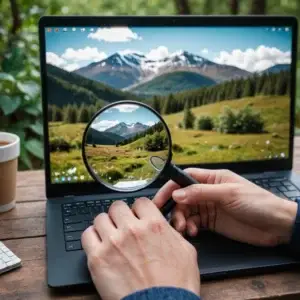
(This blog was made with the assistance of AI)
The DIY and Maker Movement is a growing community of people who are passionate about creating and innovating. 3D printing has played a major role in the success of this movement, as it has made it possible for individuals to create prototypes and finished products at a relatively low cost.
However, with the increasing popularity of 3D printing, there are also some cyber security and infrastructure concerns that need to be addressed. For example, 3D printers can be used to create malicious objects, such as weapons or counterfeit goods. Additionally, 3D printing can put a strain on existing infrastructure, such as power grids and waste disposal systems.
In this article, we will explore the ways in which 3D printing is being used in the DIY and Maker Movement, as well as the cyber security and infrastructure concerns that need to be addressed.
How is 3D Printing Being Used in the DIY and Maker Movement?
3D printing is being used in the DIY and Maker Movement in a variety of ways. Here are just a few examples:
- Custom electronics enclosures: Makers are using 3D printing to create custom enclosures for their electronic projects. This allows them to create enclosures that are perfectly tailored to their needs, and that may not be available commercially.
- Home décor: Makers are using 3D printing to create custom home décor items, such as lamps, vases, and wall art. This allows them to add a personal touch to their homes, and to create items that are unique and not found in stores.
- Cosplay and costumes: Makers are using 3D printing to create cosplay and costumes for popular characters from movies, TV shows, and video games. This allows them to create costumes that are accurate and detailed, and that may be difficult or expensive to purchase.
- Prototyping: Makers are using 3D printing to prototype new products and inventions. This allows them to quickly and easily test out different designs and concepts, without having to invest in expensive manufacturing equipment.
Cyber Security and Infrastructure Concerns
While 3D printing has the potential to be a powerful tool for innovation and creativity, there are also some cyber security and infrastructure concerns that need to be addressed.
Cyber Security Concerns
One of the biggest cyber security concerns with 3D printing is that it can be used to create malicious objects. For example, criminals could use 3D printers to create weapons, counterfeit goods, or even viruses and malware.
Additionally, 3D printers themselves can be vulnerable to cyber attacks. For example, attackers could hack into a 3D printer and change the design of a product that is being printed. This could result in the product being defective or even dangerous.
Infrastructure Concerns
Another concern is that the increasing popularity of 3D printing could put a strain on existing infrastructure. For example, 3D printers can consume a lot of electricity, and they can also produce a lot of waste material.
Additionally, the disposal of 3D printed objects can be a challenge. 3D printed objects are often made of plastic, which is a non-biodegradable material. This means that 3D printed objects can end up in landfills, where they can take hundreds or even thousands of years to decompose.
Addressing the Concerns
There are a number of things that can be done to address the cyber security and infrastructure concerns associated with 3D printing.
Cyber Security
One way to improve cyber security is to educate users about the risks associated with 3D printing. Users should be aware of the potential for malicious objects to be created using 3D printers, and they should take steps to protect their printers from cyber attacks.
Additionally, 3D printer manufacturers can improve the security of their products by implementing features such as strong authentication and encryption.
Infrastructure
One way to reduce the impact of 3D printing on infrastructure is to develop more energy-efficient 3D printers. Additionally, manufacturers of 3D printers can develop ways to reduce the amount of waste material that is produced by these devices.
Finally, governments and businesses can develop programs to encourage the recycling of 3D printed objects. 3D printing is a powerful tool that is having a major impact on the DIY and Maker Movement. However, there are also some cyber security and infrastructure concerns that need to be addressed. By educating users, improving the security of 3D printers, and developing more sustainable practices, we can help to ensure that 3D printing is used for good.



